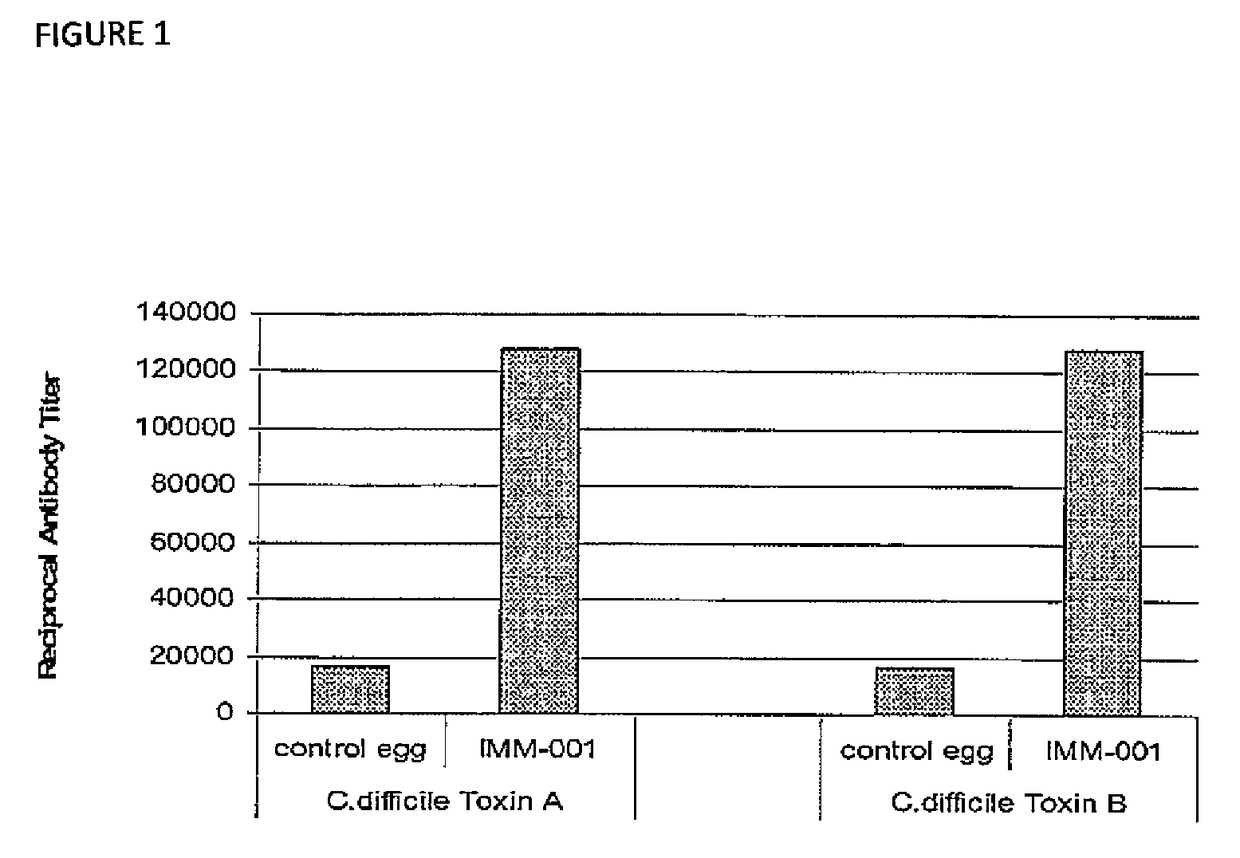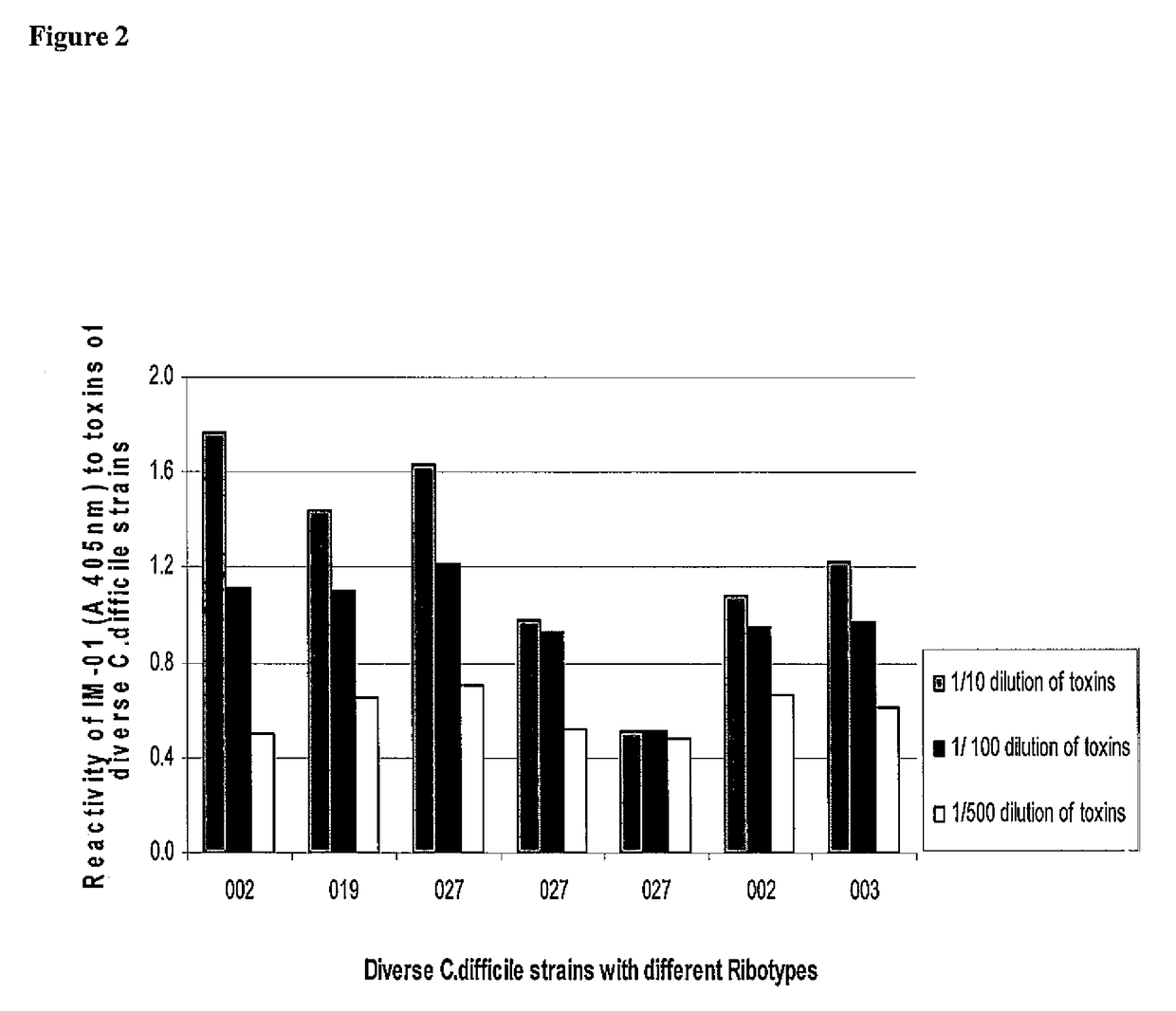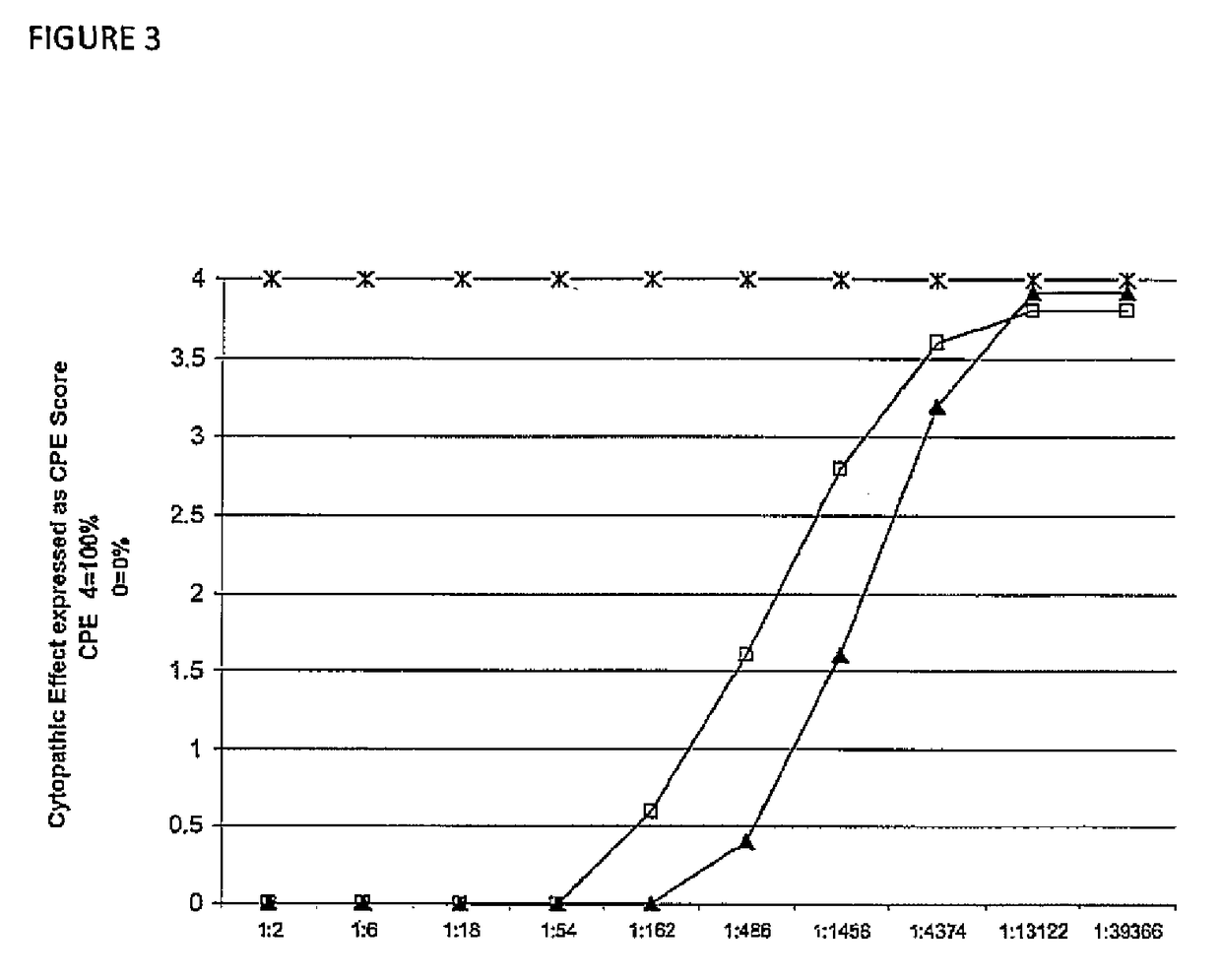Polyclonal antibodies against Clostridium difficile and uses thereof
a technology of polyclonal antibodies and clostridium difficile, which is applied in the field of polyclonal antibody composition, can solve the problems of colectomy and death, severe diarrhea, and disruption of the cytoskeleton, and achieves the effects of reducing the number of clostridium difficile infections, and improving the survival rate of clostridium difficil
- Summary
- Abstract
- Description
- Claims
- Application Information
AI Technical Summary
Benefits of technology
Problems solved by technology
Method used
Image
Examples
example 1
Manufacturing of Egg-Derived Polyclonal Antibodies IMM-001
[0162]IMM-001 is an oral polyclonal antibody therapy for the treatment of Clostridium Difficile Infection (CDI). IMM-001 is produced in chicken eggs following the immunization of laying hens with specific C. difficile virulent factor antigens: C. difficile toxin A and toxin B, and C. difficile spores.
Preparation of Immunogens
[0163]A Clostridium difficile strain isolated from the stool sample of a C. difficile infected patient was grown in Brain Heart Infusion (BHI) medium for 16-18 hrs at 37° C. in an anaerobic chamber. The bacteria were harvested by centrifugation to collect the bacterial pellet. For production of spore antigen, C. difficile was grown in BHI medium for 16-18 hrs at 37° C. in an anaerobic chamber, followed by spreading the culture on Columbia blood agar plates. The plates were then incubated for 5-7 days, at 37° C. in the anaerobic chamber. The spores were harvested in RO water, washed in RO water, centrifuge...
example 2
Specificity and Reactivity of Polyclonal Antibodies IMM-001 to Clostridium difficile Toxins Using ELISA Assays Shown in Figure-1
[0173]Specificity and reactivity of IMM-001 to C. difficile toxin A and toxin B antigens was demonstrated using 96-well polyvinyl chloride (PVC) flat bottom ELISA plates coated with 0.2 μg of purified toxin A or toxin B in 100 μL of carbonate-bicarbonate coating buffer each well. The toxin-coated plates were incubated at 4° C. for 16-18 hrs and washed with washing buffer (PBS+0.5% Tween 80). Non-specific sites were blocked after incubation with the blocking buffer (1% skim milk in PBS), the wells were washed with washing buffer and incubated at 37° C. br 2 hours with 100 μL per well of the diluted IMM-001 polyclonal antibodies in egg powder or control egg powder derived from the chicken eggs prior to vaccination. Samples were diluted to determine antibody titers in each of the test and control samples. Subsequently, the antigen-antibody interaction was dete...
example 3
Assessment of Efficacy of IMM-001 Polyclonal Antibodies In Vitro Toxin Neutralization Ability of IMM-001 Antibodies Using IMR-90 Cell Line Based Assay Shown in FIGS. 3,4&5
[0192]The cellular cytotoxicity assays were designed to determine the functional activity and mode of action of IMM-001 antibodies, since the IMM-001 antibodies recognized C. difficile toxin antigens in binding studies discussed above.
[0193]The human lung fibroblast cell line, IMR-90, cell-based in vitro assay was used to determine C. difficile toxin neutralizing ability of IMM-001, since IMR-90 cells are sensitive to both toxin A and toxin B. Briefly, IMR-90 cells (1×105 / well) were incubated with C. difficile toxin A&B alone or toxin A&B+IMM-001 antibodies for 24 hours at 37° C. The cytopathic effects were determined by observing the percentage of cells that had become rounded in the presence of the toxins. When there is no cytopathic effect, i.e. cells that had not become rounded with toxin in presence of antibod...
PUM
| Property | Measurement | Unit |
|---|---|---|
| concentration | aaaaa | aaaaa |
| body weight | aaaaa | aaaaa |
| pH | aaaaa | aaaaa |
Abstract
Description
Claims
Application Information
 Login to View More
Login to View More - R&D
- Intellectual Property
- Life Sciences
- Materials
- Tech Scout
- Unparalleled Data Quality
- Higher Quality Content
- 60% Fewer Hallucinations
Browse by: Latest US Patents, China's latest patents, Technical Efficacy Thesaurus, Application Domain, Technology Topic, Popular Technical Reports.
© 2025 PatSnap. All rights reserved.Legal|Privacy policy|Modern Slavery Act Transparency Statement|Sitemap|About US| Contact US: help@patsnap.com



